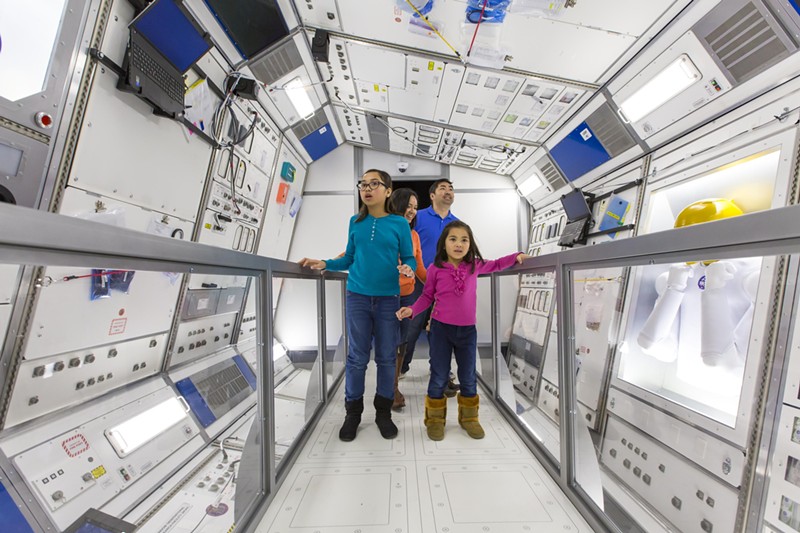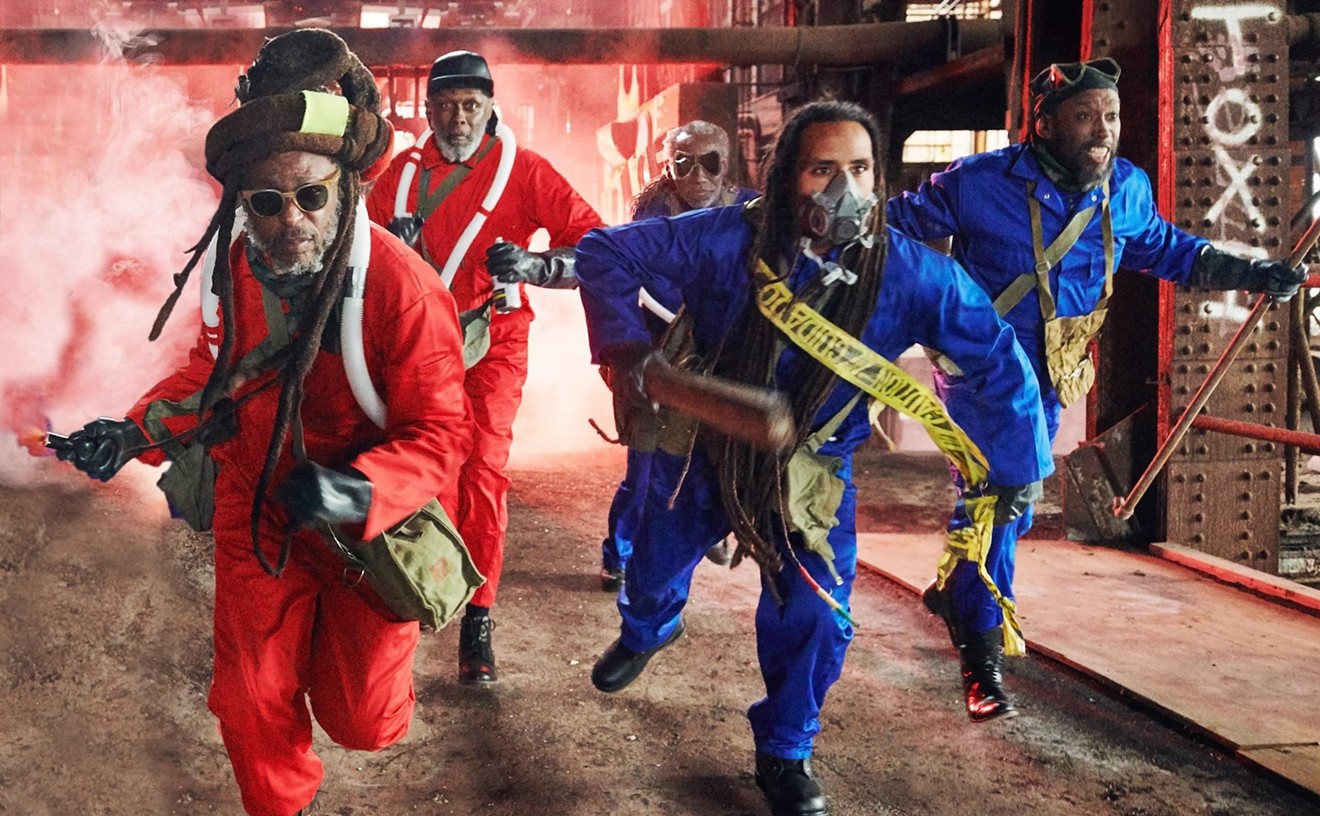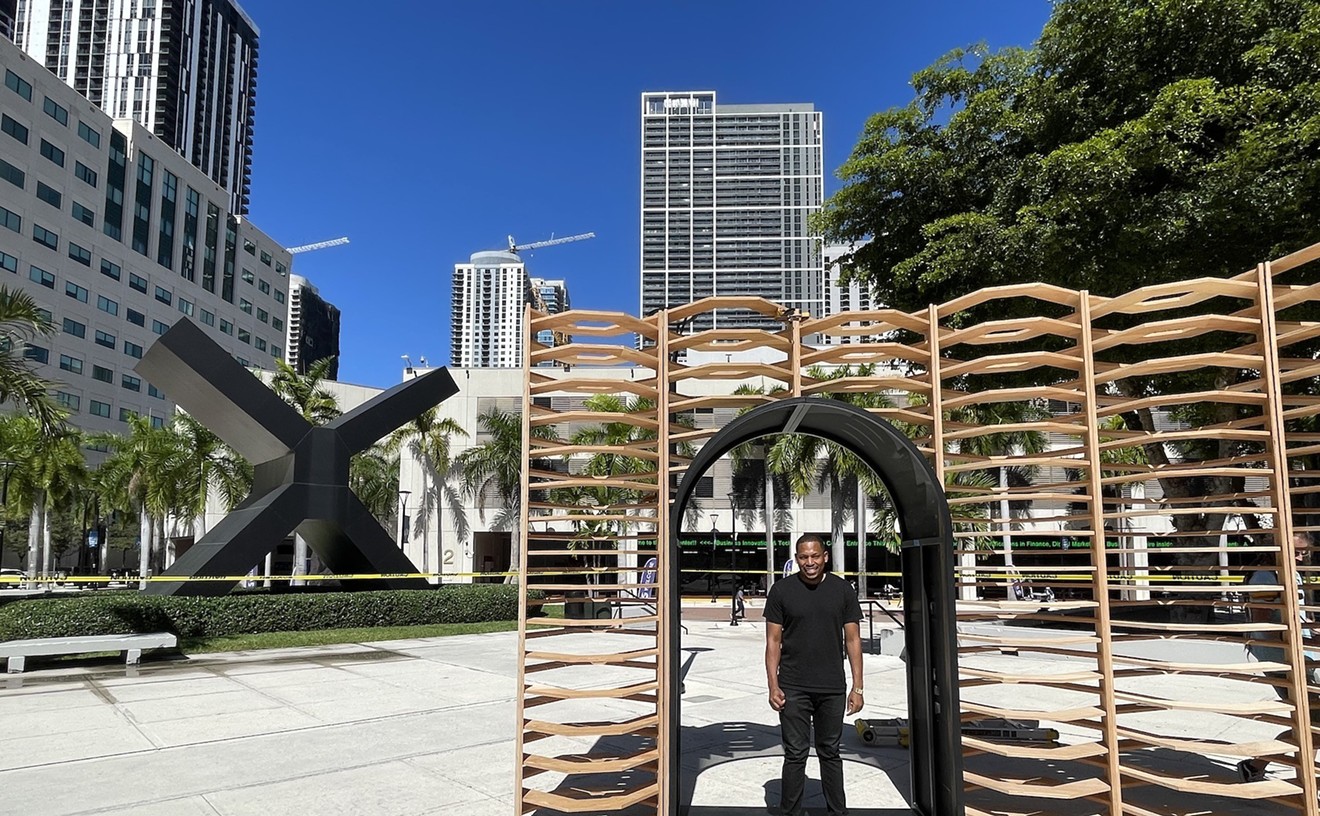"Journey to Space" is the latest large-scale temporary exhibition at the downtown Miami museum. Much as "Sharks" from last year aimed to demystify the deep-sea creatures, the show uses interactive displays and experiments to discuss how and why humans dare to brave the dark vacuum of space.
"Space especially is one of those universal concepts that everybody can experience and relate to in some way, whether it's looking up at the night sky, or using a telescope to view a distant object, or using your GPS on your phone," says Alec Warren, director of the museum's Frost Planetarium. "So this exhibit really tells those stories. It explores how we get to space, the challenges of getting there, what astronauts do once they're there, and also the past, present, and future of space travel as a whole. So it's one of those stories that is just essential, I think, for telling the story of science and human culture and experience, and that's really what drew us to bring this exhibit to Frost Science."
The exhibition opened to the general public last Saturday, May 26. It's not the first time the show has been staged at the museum — an earlier version debuted in 2017, according to Warren — but significant updates have been made to the traveling show since then. This version includes a showstopping centerpiece: a full-scale replica of the Destiny Lab module of the International Space Station. The module, which features special lights and displays, also spins slowly, simulating what it might feel like to be in the real thing. Visitors stand on a fixed walkway, but the moving parts might unexpectedly cause dizziness or motion sickness — and that's with gravity.
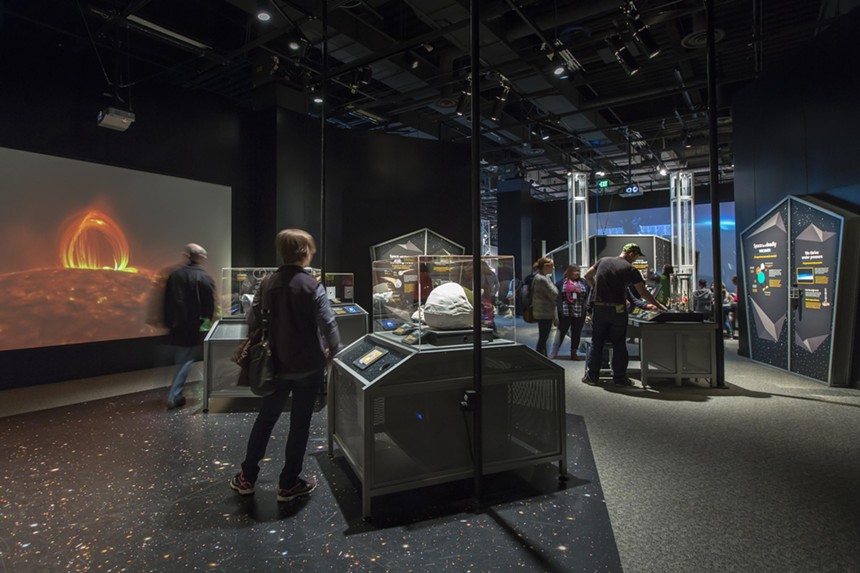
A variety of interactive displays illustrate the challenges of space flight.
Frost Science Museum photo
The section on living in space features more artifacts, such as an experimental skin suit designed to prevent zero-g skeletal stretching. (Yikes!) Video screens show archival footage of real astronauts aboard the ISS demonstrating how they eat, sleep, exercise, and work in space. Nearby, visitors can also find out how astronauts, um, go in space with a 1:1 scale space toilet, also modeled after the real thing on the ISS. It doesn't look like the most comfortable experience — it's basically a hole and a tube — but it's illustrative of what astronauts actually experience living in orbit.
But the heart of the show lies in its hands-on sections, which demonstrate viscerally the difficulties of space flight. At one station, you can put your hand into a spacesuit glove, like Armstrong's, and pick up a wooden block. A switch nearby empties the Plexiglas chamber of air, and the lack of pressure makes the glove expand, demonstrating how hard it is for astronauts to move and work in the vacuum of space.
Several of the displays encourage gamefied learning. One station sends a water-powered rocket flying in a glass-walled box — can you figure out the right amount of fuel it takes to reach the top? Another features an Among Us-like power-routing game — can you control the solar power in the space station and make sure life support doesn't fail?
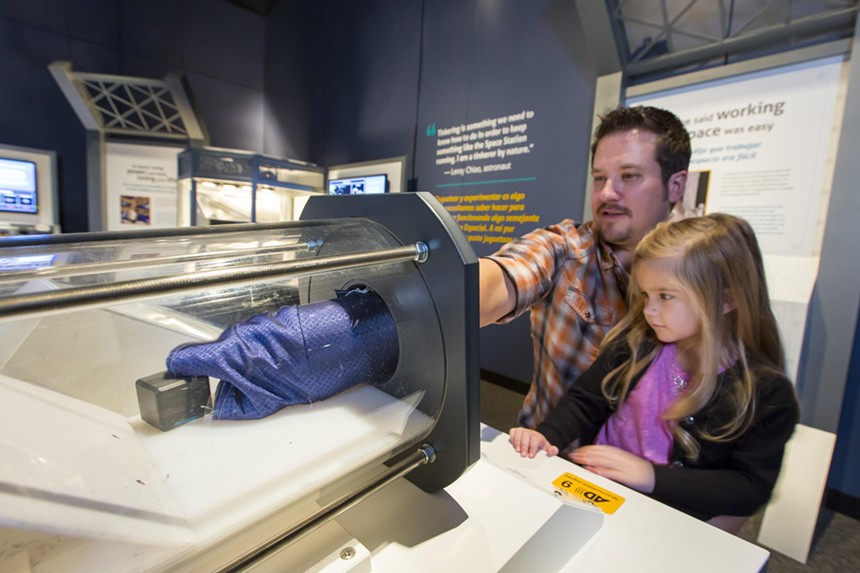
Guests try out an interactive display at Frost Science Museum's "Journey to Space."
Frost Science Museum photo
"The Voyager records are more symbolic because the odds of an alien civilization stumbling upon either Voyager probe is going to be extremely unlikely," Warren says. "Lately, even NASA has had issues staying in contact with the Voyager probes. They lost contact for several months and were able to re-establish a connection. But they're getting that far out now that they may even be beyond our reach."
Still, the record remains one of the most inspiring ideas from the Golden Age of Spaceflight, and its presence, even as a commercial replica, is just as stirring as seeing Armstrong's gloves. Around the glass case, the museum has displayed some of the 115 images from the record: airplanes in flight, Olympic sprinters, diagrams of human anatomy, men building a house. There are also two listening stations where visitors can hear audio from the record, including "Greetings in 55 Languages" and music selections that include J.S. Bach's Brandenberg Concerto No. 2, Indonesian gamelan recordings, and Chuck Berry's "Johnny B. Goode." It's a time capsule of what the spacefarers of its era found valuable enough to share with whoever might live out in the stars.
"Journey to Space." On view through October 26 at the Philip and Patricia Frost Science Museum, 1101 Biscayne Blvd., Miami; 305-434-9600; frostscience.org. Tickets cost $22.95 to $32.95; admission is free for children 3 and under and members. Daily 10 a.m. to 6 p.m.

